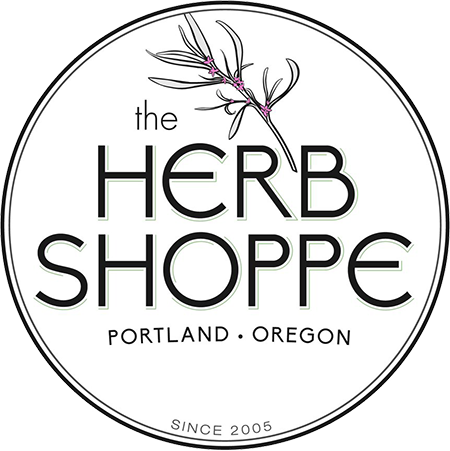The New Year represents so much release, freedom, and opportunity. It's the world's way of saying we made it. It's a time to celebrate how far we've come and all that is to come. It's at this time of the year that the winter winds bring hibernation to the Earth and dreams to the sleeping. It's an opportunity for rejuvenation found in our own reflection. The very act of looking back brings awareness to all that you have yet to become.
Menispermum canadense
Menispermum canadense, or Moonseed as it is commonly known in English, is a climbing, vine-like flowering plant that is all too mistakable for the common wild grape. Unlike wild grapes, all parts of moonseed plants are considered toxic to humans, especially the seeds and roots, which are infamous for their deadly mishaps (Herbs of Life and Death, 2022). But it seems our ancestors found a use for just about everything they came across. One known rule of thumb for toxic plants in traditional and folk medicine is that which can not be absorbed by the body can be applied to the body.
The root has been prepared into a salve and applied to sores and compromised skin for its powerful venereal (skin healing) aid. Among the first to use moonseed for these purposes were the Cherokee and the Lenape. The Cherokee have also found a use for it as a powerful laxative, diuretic, and alternative. However, anything past a small preparation quickly turns moonseed’s medicinal actions into a purgative and emetic. It is worth mentioning that most plants that cause emetic or purgative herbal actions are most commonly classified as controlled substances and toxins.
The therapeutic dosage of moonseed requires the attention and preparations of a skilled professional. Usually, that of a naturopathic doctor, a Traditional Chinese Medicine doctor, or an experienced herbal medicine elder who knows the plant's personality and medicinal profile both inside and outside the human body. In traditional remedies, you may come across preparations for powdered, tinctured, and fluid extracts of moonseed. Attempting any of these preparations without the capabilities of blood lab analysis and concentrators, you are likely to overshoot the therapeutic dosage here. The consequences are never pretty, but here are a few indicators you may have moonseed poisoning.
Symptoms may include irregular and rapid heartbeat, sudden and compulsive seizing, painful nausea, and stomach cramping. Like many other toxic plants, the concentration of too many constituents is hard on the cardiac system, creating irregular heartbeats, which may prove to be fatal to young children and adults alike. Seek emergency medical attention if you suspect someone has eaten the fruit of a moonseed vine.
Bei Dou Gen in TCM
Moonseed can also be found in Traditional Chinese Medicine, although it is not commonly used by today's practitioners. Before global trade, practitioners and healers simply had what they had. That was it, and they made the most of their medicines, including toxic plants. Bei Dou Gen, as it is referred to, is known to resonate with lung, stomach, and intestinal Qi. It is called for in remedies that aid in clearing heat, removing toxicity from the blood, decreasing inflammation and swelling in the skin, promoting Urination and other downward Qis, and also in relieving systemic pain (White Rabbit Institute of Healing, 2020).
Moonseed in Herbalism
Western Herbalists found very similar uses for moonseed. The main systems it affects are the skin and digestive system. Moonseed's herbal actions are listed as antisyphilitic, anti-inflammatory, diuretic, emetic, and purgative, and as a nervine, tonic, and laxative (A Modern Herbal, 2021). For the same reasons listed above, it is very unlikely to find a western herbalist who will use moonseed as a part of their materia medica. Moonseed grows just about everywhere in the northern hemisphere, and so while it is not a common plant to work with today, it would've been a plant ally for those of our past.
Modern Menispermum canadense
Today, research continues to reveal moonseed's powerful constituents and how we can employ them in biomedicine. Its most desirable actions are that of possible anti-cancer properties. Specifically, in manifestations of leukemias and lymphomas, where white blood cells, specifically the human T-Cell, can be targeted and killed with a compound constituent of Moonseed called acutumine. The knowledge still awaits testing on actual living cancerous human T-Cells (WhiteHead Institute, 2020).
Looking back on our past, we may find old ideas and cycles that we now consider to be toxic, But all things under the sun grow, and where answers might have fallen short before, wonders can be heard in the refraction of time. Thank you for starting the new year here on The Poisonous Path. And the next time you go foraging for wild grapes, be sure to heed the moonseed fruit, for it is all too similar.
References
- Hsweet, H. “Moonseed: A Toxic Lookalike of Wild Grapes – Herbs of Life and Death.” http://herbsoflifeanddeath.org/, 25 Feb. 2022, herbsoflifeanddeath.org/2022/02/25/moonseed-a-toxic-lookalike-of-wild-grapes. Accessed 23 Dec. 2022.
- White Rabbit Institute of Healing. “Moonseed (Bei Dou Gen).” White Rabbit Institute of Healing, 21 July 2020, www.whiterabbitinstituteofhealing.com/herbs/moonseed. 3. M, S. “Moonseed Facts, Health Benefits.” Health Benefits | Health Benefits of Foods and Drinks, 4 Mar. 2020, www.healthbenefitstimes.com/moonseed.
- Wikipedia contributors. “Menispermum Canadense.” Wikipedia, 31 Aug. 2022, en.wikipedia.org/wiki/Menispermum_canadense.
- “Harnessing the Moonseed Plant’s Chemical Know-how.” Whitehead Institute of MIT, wi.mit.edu/news/harnessing-moonseed-plant-s-chemical-know-how
- Glority LLC Limiterd. “Common Moonseed (Menispermum Canadense) Flower, Leaf, Care, Uses.” PictureThis, www.picturethisai.com/wiki/Menispermum_canadense.html.
- A Modern Herbal | Parilla, Yellow. www.botanical.com/botanical/mgmh/p/parill07.html.

